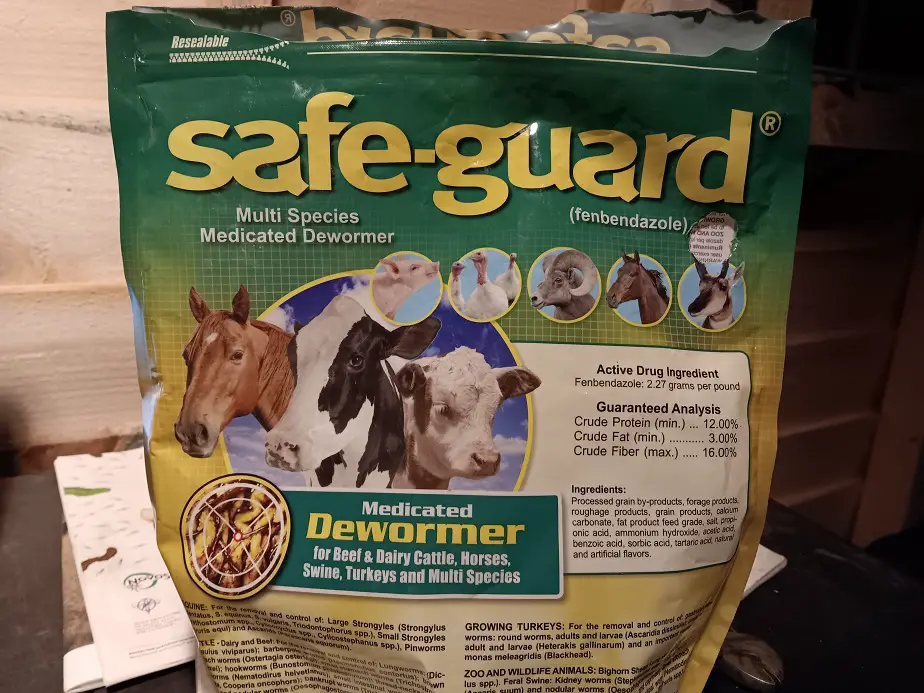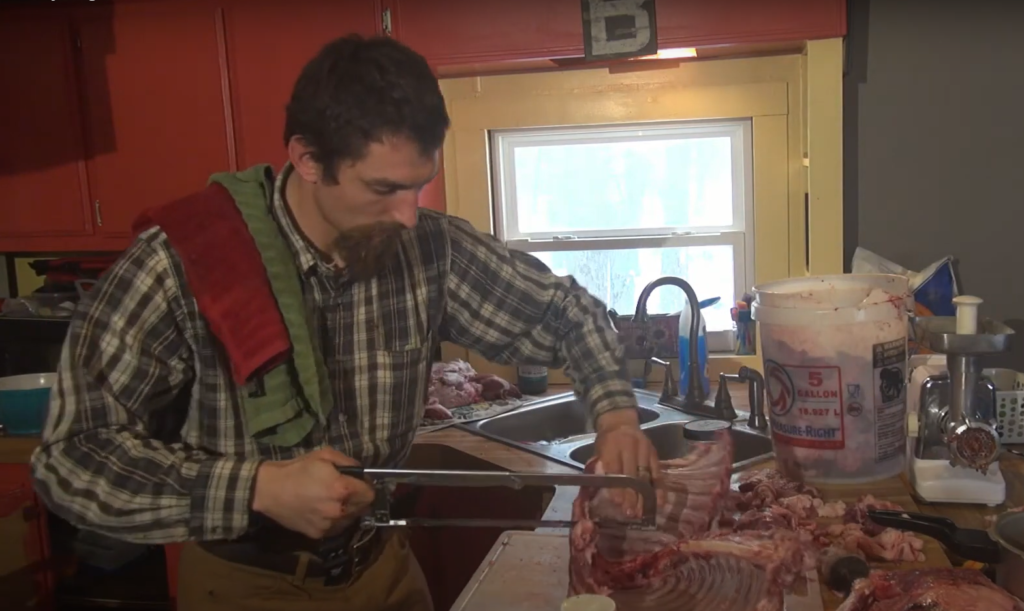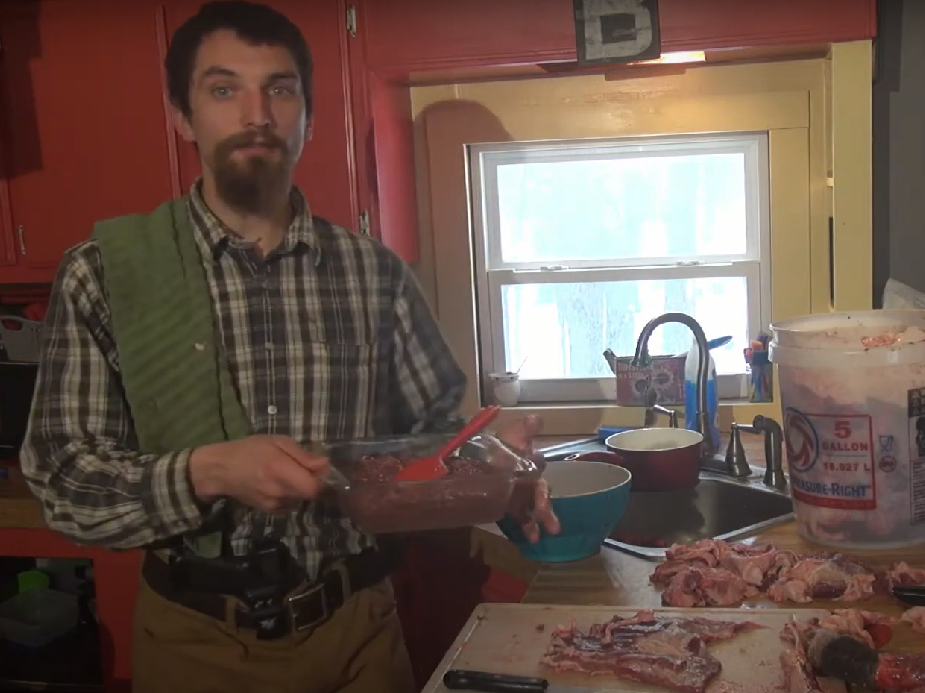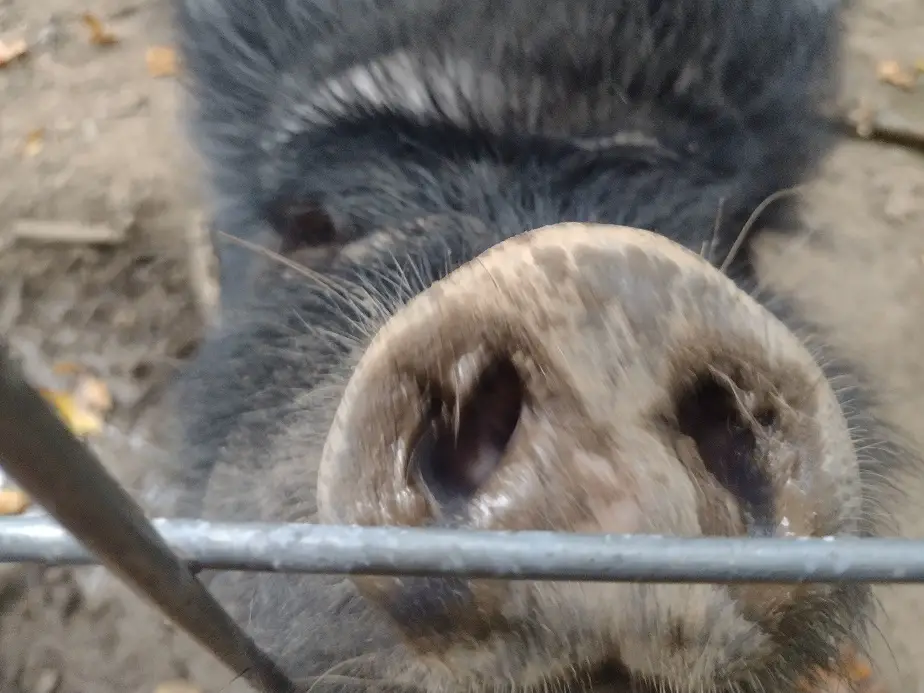Raising pigs has become one of my favorite pastimes. From birthing to butchering, It’s an enjoyable family activity that really helps us be more self-sufficient.
Most pigs produce between 110 and 130 pounds of meat. Pigs yield about 50 percent of their weight in pork, no matter the breed. Total yield can vary between 45 and 65 percent of live weight based on the retaining of organs and skin, retained fat content, and quality of butchering.
Whether buying half-a hog, a whole hog, or butchering your own, You should understand just what you’re getting and what to prepare for. Let’s talk about the factors and what you can actually expect.
The typical butcher-ready hog is 250 pounds at the time of butcher and yields about 130 pounds of pork, 7 to 8 pounds of organ meat, and has another 40 pounds of skin, fat, and meat bones that are usually tossed out. The amount of pork can go up or down 10 pounds on a whim.
It’s very tough to maintain a perfect weight among pigs. There will always be some that are bigger and some that are smaller. That’s a matter of genetics and the health and behavior of pigs. A pig that’s more active tends to yield less because it’s burning extra calories and staying thin.
Here’s a table showing approximate yields from standard hogs and heritage breeds.
| *Assuming a breed-standard butcher age | Live weight | Half a pig | Whole pig |
| Standard comercial hog | 250 pounds | 60 pounds | 130 pounds |
| *Heritage commercial-type pig | 200-250 pounds | 50-60 pounds | 100-125 pounds |
| Idaho Pasture Pig | 150 pounds | 37 pounds | 75 pounds |
| Guinea Hog | 100 pounds | 25 pounds | 50 pounds |
| Kunekune | 60 pounds | 15 pounds | 30 pounds |
| Potbelly | 60 pounds | 15 pounds | 30 pounds |
| Juliana | 40 pounds | 10 pounds | 20 pounds |
Red Wattle, Poland China.
That’s why commercial pig farms keep pigs in tight confinement that prevents almost all exercise and activity. Pigs raised in a pasture environment tend to need an extra month or two to reach the desired butcher weight because they’re living an active, social, healthy pig life.
Most home-raised pigs have a lower percentage yield than commercially raised pigs. That’s because they’re not being tightly controlled. by micro-managing a pig, you can squeak out a bit more productivity, but that requires a lot of infrastructure and equipment.
Automatic feeders and waterers, indoor raising space, and constantly maintaining a “perfect” air temperature all help pigs to attain a higher yield. Eliminating natural sunlight and using tight stalls with no sunlight work to eliminate a pig’s natural social and exercise behaviors, which allows them to gain more weight.
M pigs are raised outside year-round. Several pig farmers berate me for that, but I realize that it creates healthier pigs with better tasting pork. I prefer my pigs to get clean pasture, fresh fodder, fresh air, and sunshine. It creates a more wholesome farm and a more wholesome product.

One thing you need for pigs, no matter your raising system, is a parasitic worm treatment. The best swine dewormer is Fenbendazole. It’s known by the brand name Safeguard. Safeguard is available as a medicated corn/alfalfa pellet. It’s the only way I can worm my pigs since they won’t stand still for an injection of Ivermectin. It’s easy and cheap.
- There is a stronger pellet for swine only. Here it is on Amazon
- There is a weaker pellet for general barnyard livestock, including swine. Here it is on Amazon.
I use the multi-species version because it’s what’s available in my local store and I can use it for my chickens too. It’s the most effective swine wormer and the easiest to administer. I use it on all weaned piglets and adults twice a year. Don’t go without it.

Tips for Getting More Meat From a Pig
The best way to get the most from your pig is knowing how it use it all. Heart, liver, and Kidney are all good to eat but are often thrown out. Parts like the tail and head, which contain good meat, are often forgotten about. The skin makes good pork rinds when properly prepared, and the excess fat makes good lard.
I know, some people don’t want to use things like heart and liver. Our culture is wrought with a “throw it away” mentality that causes the average person to be fairly wasteful. I convinced my wife to like it,
I’ll show you how we get an extra 15 percent on our animals by reducing waste. I also have a few really good recipes to share with you.
Getting More Meat From the Bones
One of the best ways to get more from your pig is to save and boil all the bones. There are always bits of meat left on them that you just can’t seem to get off. After boiling, it comes right off. A pot of bones can give you several pounds of meat, plus a super-rich broth to save for making soups.
The tail is great for soups. It needs to be skinned first, but the meat and cartilage of the tail make an amazing broth for soups. It’s even better if smoked or oven-roasted first.
The head of a pig has three main parts. The bone, the jowls, and the cartilage. First, skin the head. The snout and ears are removed to make a collagen-rich broth, the jowls (cheek muscle) are filleted off for frying or roasting, and the bone is boiled for a broth, often with the cartilage.
It’s an amazing broth combination. All the cartilage of the snout will dissolve after being boiled long enough (goes quick in a pressure cooker), and the meat scraps on the skull will come off and add good flavor to the broth.
We use a pressure cooker for this. It can take 3 hours in a regular pot, but only about 30-45 minutes in a pressure cooker. Larger bones are cut or cracked down to fit in the pot. lower legs and feet are much like the skull, not so much meat, but full of cartilage. They are traditionally skinned and boiled for a soup.

Using the Heart, Liver, and Kidneys
The heart, liver, and kidneys are easy to find and easy to separate from the carcass. They pretty much just pop out with a tug. The Kidneys are good to go as is. The heart has a membrane sack around it that needs to be removed. Just cut or tear it and slide it off. The Liver needs to have the gallbladder cut out.
The gall bladder is easy to see. it looks like a dark or green spot on the top of the liver. Don’t cut or puncture it. Cut around and under it, lift it out, and toss it. Then it’s good to go.
They are all good to fry up, and unlike regular meat, they don’t benefit from aging so using them fresh is fine. I prefer to grind them up for some sort of sausage. Here’s a tip, if you dice the heart and kidneys, mix them in twice as much pork, and grind to make sausage, your in-laws will never know it had organ meat.
My favorite way to use the liver and heart is to dice them add half as much fat trimmings, then grind the whole mix. Add in a heavy dose of allspice, nutmeg, and black pepper (maybe a bit of cayenne), then put it in a bread pan and sprinkle salt on top. Bake at 350 until well done in the middle.
It’s a very good liver loaf that even my wife likes. The sweet spices really make liver tasty. The liver is very high in vitamins C and B, as well as iron and a bunch of other essential minerals. That helps us to be more sustainable because there’s no other way to get natural vitamin C in the cold months.
Related Articles:

